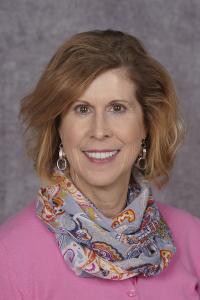
Dental Telehealth Initiative Offers Care Amid COVID-19 Crisis
When COVID-19 began spreading through New York City in March 2020, many area dental offices closed for the safety of patients and providers. Columbia University College of Dental Medicine (CDM) limited its clinic operations to emergencies, but as it grew clear that broader dental care was needed, CDM leadership, faculty, and staff mobilized to create a program that could help patients remotely.
The dental school launched its telehealth initiative eight days after service restrictions for the clinic were put in place, and the program has been expanding since to deliver much-needed oral health services to the Northern Manhattan community.
Patient needs prompt initiative
The impetus for remote dentistry emerged quickly after non-emergency care was put on pause, said Sharon Perelman, DDS, MMI, chief medical informatics officer at CDM and assistant professor of dental medicine at the Columbia University Medical Center.
“Our main goal at the beginning was to keep patients out of the emergency room because it was so overburdened with COVID cases,” she said. “But after a day or so, I learned from faculty members that most of the patients coming in were not emergencies based on the guidelines from the ADA and could be managed medically with a telehealth visit providing advice, reassurance, or possibly a prescription.”
Acting on that suggestion, Perelman organized a group of faculty to screen and assist the patients who called a phone number posted on the dental school website. “Patients would be routed to the faculty pool, and our faculty would then call the patient back and speak with them, determine the nature of their emergency, and give them advice,” she explained.
CDM’s telehealth initiative has grown substantially in the months since, buoyed along by Perelman and her team, who have built tools and frameworks to support its dentists and enhance care.
Systems for smarter screening
An early priority was to create a screening tool to address patients’ dental needs while considering their COVID-19 status. To achieve this, Perelman and assistant professor Lynda Torre, DDS, developed an acuity scale to stratify risk and identify patients who are likely to have poor outcomes if care is delayed. The acuity levels range from 1 to 5—with 1 being a request of minimal urgency, such as a teeth cleaning, and 5 being an emergency—and guide provider action.
As call volume rose and additional faculty were brought into the pool, the consistency and clarity afforded by the screening system became increasingly important. “We found that it exponentially increased the number of patients that we could treat through telehealth, and it allowed the patients with emergent needs to come into the clinic and be seen right away,” said Perelman. It has also prevented waiting rooms full of patients in close proximity.
CDM chief information officer Steve Erde, MD, PhD, and clinical and analytical systems director Tunaidi Ansari then transformed the screening tool into a module within Epic, the electronic health record used across Columbia/NewYork-Presbyterian health system, using an algorithm the team designed. The algorithm takes data from a patient’s COVID and dental screenings and recommends a course of action based on the latest CDC and American Dental Association (ADA) guidelines and CDM’s infection control policy, facilitating a seamless, informed, and efficient decision-making process.
Another feature of the module automatically pulls all the results from a patient’s screenings into a note for the provider, said Ansari. This allows dentists to easily track and review patient progress over time.
Expanded care with video visits
Video has offered an extra dimension of care to dental patients connecting remotely with Columbia faculty and even led to new ways of delivering treatment. For example, a new video visit program spearheaded by assistant professor Christine O’Hea, DMD, enables patients to put in their removable orthodontic aligners themselves while a CDM orthodontist supervises and makes sure that the aligners are fitting well.
Video visits have been particularly beneficial for follow-ups with patients who have recently had dental surgery, said Perelman, because dentists can check in with the patients visually and verbally without requiring a trip to the clinic.
The video appointments are completed through Connect, Columbia’s secure patient portal that is integrated with Epic.
A game changer for dental practice
Perelman’s vision for the near future is that dental visits start before a patient arrives in the clinic—with students and faculty prescreening the patient, getting a medical history, and updating medications over video—so that by the time the physical visit takes place, the case has been assigned to students, a treatment plan has been developed, and the patient can potentially have a procedure done during that first clinic visit.
Reducing the number of physical visits needed has the immediate benefit of lowering the risk of coronavirus transmission, but it also improves access to dentistry for people who have difficulty coming to the clinic, said Perelman.
“Oftentimes when people think of dentistry, they think it is just procedures—how could you possibly do teledentistry? I can’t do anything with the drill over the phone. But it’s not; it’s much more. It’s oral medicine, and there’s an incredible potential for things we can do with telemedicine,” she said. “It evolved very rapidly, and it’s still evolving. I think it’s going to drastically change dental health.”
To make an appointment, or for more information about available dental services, please visit https://www.dental.columbia.edu/patient-care/teaching-clinics/covid-update-emergency-dental-services-notice.



